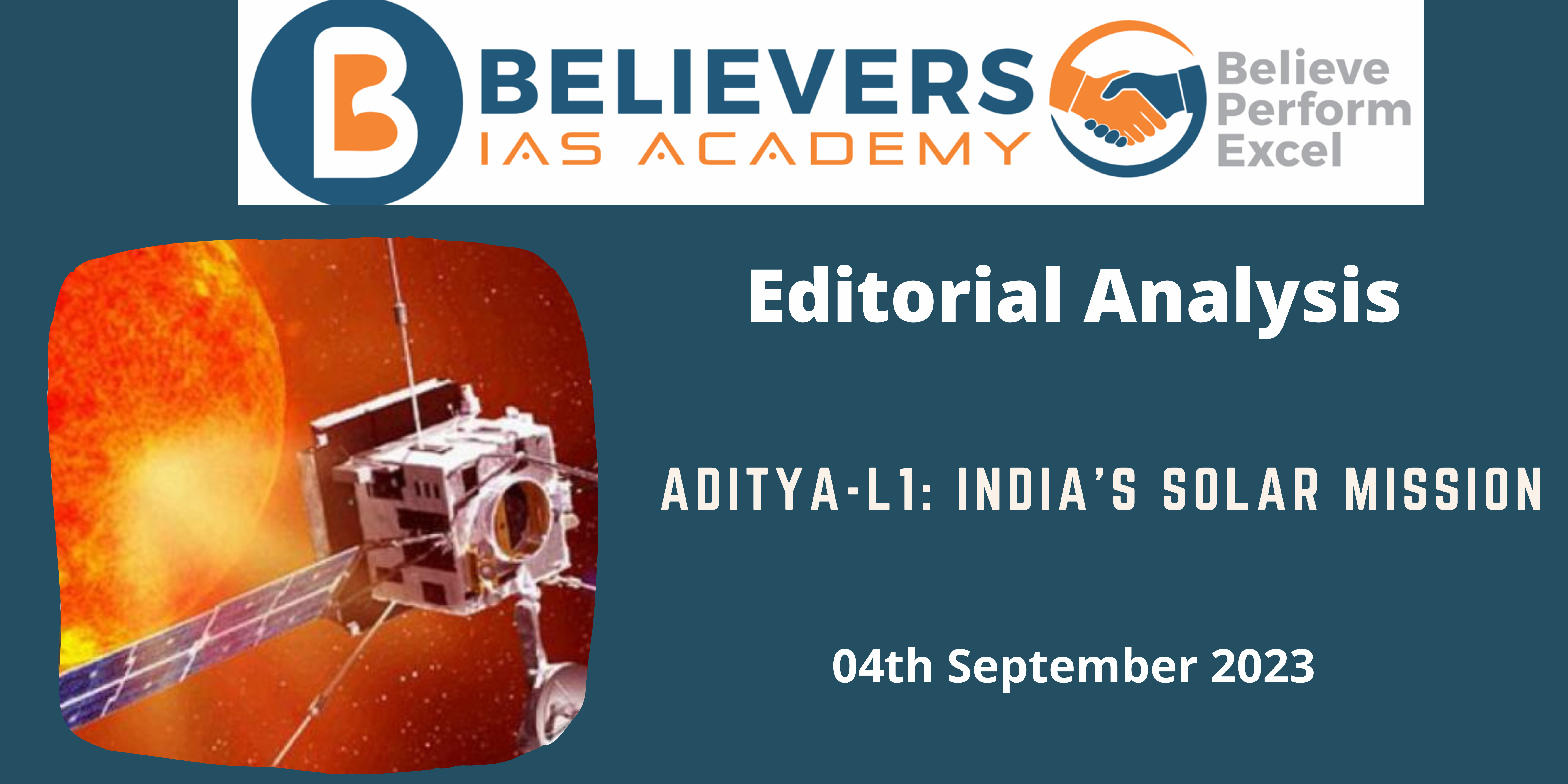Aditya-L1: India’s Solar Mission
Context:
ISRO is transitioning from lunar exploration to solar study, signifying the nation’s evolving prowess in space exploration. Aditya-L1’s findings hold the promise of shaping future space missions and unraveling the solar wind’s intricacies.
Relevance:
GS-03 (Space technology)
Prelims:
- Aditya-L1 Mission
- L1 (Lagrangian/Lagrange Point 1)
- Indian Space Research Organisation (ISRO)
Mains Question:
- Explain the significance of the Aditya-L1 mission and the potential insights it may provide about sun. How does this mission mark a significant development in India’s space exploration? (250 words)
Dimensions of the Article:
- Aditya-L1’s Mission
- Launch Vehicle and Payloads
- L1 Orbit and Its Significance
- VELC Payload Features and Significance
- Other Solar Missions
Aditya-L1 Mission:
- The Aditya-L1 Mission is a project aimed at studying various aspects of the Sun.
- It involves launching the Aditya L1 spacecraft using the Polar Satellite Launch Vehicle (PSLV) with seven payloads onboard.
Launch Vehicle and Payloads:
The Aditya L1 spacecraft will be launched using the PSLV and will carry seven payloads (instruments):
- VELC
- Solar Ultraviolet Imaging Telescope (SUIT)
- Solar Low Energy X-ray Spectrometer (SoLEXS)
- Aditya Solar wind Particle Experiment (ASPEX)
- High Energy L1 Orbiting X-ray Spectrometer (HEL1OS)
- Plasma Analyser Package for Aditya (PAPA)
- Advanced Tri-axial High Resolution Digital Magnetometers
L1 Orbit and Its Significance:
- Aditya-L1 will be launched to the Lagrangian Point 1 (L1) orbit, situated approximately 1.5 million km from Earth.
- L1 is a point in the Earth-Sun orbital system, offering gravitational conditions favorable for the spacecraft.
- Placing a satellite in the halo orbit around L1 enables uninterrupted observation of the Sun, without being affected by occultation or eclipses.
VELC Payload Features and Significance:
- The Visible Emission Line Coronagraph (VELC) is the key payload among the seven instruments. Developed over a span of 15 years, it is a highly precise instrument designed in India.
- VELC’s significance lies in its capability to study the corona’s temperature, velocity, and density. It aids in understanding processes leading to corona heating, solar wind acceleration, space weather drivers, magnetic field measurement, and the origin of coronal mass ejections.
Other Solar Missions:
- NASA’s Parker Solar Probe: Focuses on tracing energy and heat movement in the Sun’s corona and studying the solar wind’s acceleration source. Part of NASA’s ‘Living With a Star’ initiative.
- Helios 2 Solar Probe: A joint venture of NASA and erstwhile West Germany’s space agency, it approached within 43 million km of the Sun’s surface in 1976.
- Solar Orbiter: Joint mission by ESA and NASA to gather data on how the Sun shapes and controls the dynamic space environment across the solar system.
- Active Sun-Monitoring Spacecraft: Includes ACE, IRIS, WIND, Hinode, Solar Dynamics Observatory, and Solar Terrestrial R
Way Forward:
- To maximize the scientific output of Aditya-L1, ISRO should foster collaborations with international space agencies and research institutions.
- ISRO should also focus on investing in cutting-edge data analytics and processing capabilities to ensure that the information garnered from the mission is effectively used.
- ISRO should launch comprehensive public outreach programs, including exhibitions, lectures, and interactive platforms, to educate and inspire the next generation of space enthusiasts.




